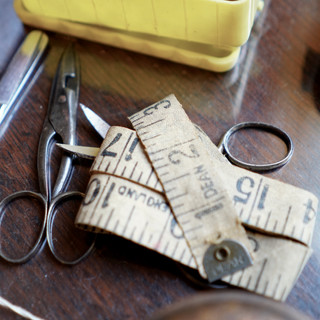Miss Porter's House - the story of two Stylish Sisters in the heart of Newcastle
- Hunter Heritage
- Nov 21, 2019
- 4 min read
Updated: Dec 1, 2022
A visit to the perfectly preserved home of the Porter sisters allows us to explore the lives of these 20th Century women.
30 years ago, in the aftermath of an earthquake that shook Newcastle, workers at the Hunter Water Board were shocked to find two elderly women crawling out of the rubble of what they had, for years, presumed was an abandoned house.
They were octogenarian sisters, Ella and Hazel Porter and they had lived continuously in their King Street home their entire lives.
The Porter house is a narrow, two-storey Edwardian, cluttered as you’d expect with almost 100 years of memories and design. The home retains much of its original architectural and interior style including stencilled wood ceilings, oversized furniture and vintage appliances. There are also many antique and art deco furnishings on display: uranium glass, porcelain washbasins, Bakerlite radios and cushions handmade with the fashionable fabrics of different eras. Out the back, is a tiny garden laden with fruit and vegetables.
The Early Days
The sisters’ grandfather, James Porter, was a British immigrant who set up business on Blane St (now Hunter St West) and the family lived above the terraced general store. In 1906, James purchased the allotment behind his building and shortly after gave it to his son, Herbert and bride Florence to establish their family home. The house was completed in 1910 for a little under £500 and faced onto what was called Langford Street at the time.
It was here that Ella Baldwin Porter was born in 1911, followed three years later by her sister Hazel Mildred. But the picture of middle-class urban life was soon to be shattered.
In 1919, as soldiers were returning from the Great War in Europe an influenza epidemic swept the globe. Infecting a third of the world’s population, it took over 50 million lives, including 41 year old Herbert. This left Florence widowed with the two girls. They continued to live on in the house, but with Herbert's parents also deceased, they were largely on their own in the city.
The area between Steele and Union Streets was never residential. The families neighbours included the Gas Company, Water Board, produce markets and nearby, in Devonshire St, were the Chinese market gardeners. On the other side of Hunter Street were the Honeysuckle wharves. 100 years before the land was redeveloped into apartments, the waterfront area was full of dockworkers, ships, wool bales and coal carts. Later the area gave way to more commercial and administration business, but the Porter’s King Street house continued to be one of the only residential homes.
20th Century Women
Ella and Hazel’s lives spanned almost the entirety of the 20th century. From feminism and fashion to cars and computers it was a century of extraordinary social, economic and industrial change. And as unmarried career women living in the city centre, they were firmly part of it.
Although neither sister married, their lives were far from that of staid old maids. Hazel worked as a secretary/clerk while Ella was employed as a bookkeeper for various businesses around town. The women also led lively social lives. They reportedly had a range of friends and interests in the community.
And stylish; the girls were always fashion conscious.
Downstairs, there is an early image of them as children with their Mary Pickford sausage curls and enormous bows. Upstairs are their sewing tables and wardrobes filled with beautifully crafted gowns, blouses and coats that reflect the fashions of the day. They were waif slim girls who wore them elegantly.
But they were also thrifty. Despite living within a short walk of Newcastle's shops and department stores, the sisters made every item by hand. Sewing boxes, patterns and materials take up a good amount of space in their bedrooms. And each piece of clothing displays a clear attention to detail.
Shoes may have been their vice. At the top of the stairs, shelves are filled with well kept vintage heels. There are round-toed pumps, Donna Shoes and slingbacks. All are in tantalisingly walkout condition.
The museum staff regularly change out the dresses on show but if you ask sweetly they might let you take a peek in the overstuffed wardrobes.
The sisters lived in a unique era experiencing perhaps the greatest changes in women's fashion and social freedom in human history. From the limitations of corsets, petticoats and floor length skirts to the liberty of trousers, mini-skirts and feminism the sisters witnessed a transformative shift in attitude and convention. They kept up with the trends into their older age and then continued to be able to watch the passing traffic from the front window of their CBD home.
The National Trust Steps In
After the earthquake, Ella and Hazel were relocated for a short time while the house was repaired. It was during these repair works that the sisters took the opportunity to make the only structural change to the building in almost 100 years. The bathroom was updated and integrated into the house, saving the elderly ladies the need to go outdoors to the loo. Aside from this alteration, the house remains not only architecturally intact but exactly as the sisters left it, providing a tangible insight into 20th century urban life.
The Porter House's location in King Street made the home desirable to developers. However, Hazel preferred that it be preserved with its contents and gardens. Prior to her death in 1997 she made arrangements with the National Trust to hand the building over as a museum. The National Trust of Australia continues to manage the house with the help of volunteers who maintain the gardens, provide guided tours and have helped catalogue some 8000 objects.

HH The Porter House, 434 King St, Newcastle West, is open the 4th Sunday of every month.





























Comments